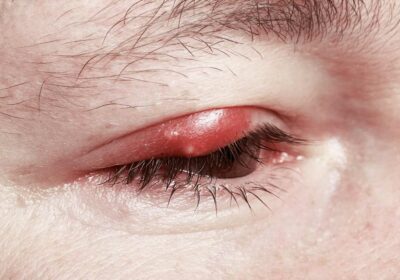How to get rid of a stye?

STYES can be a sight for sore eyes and come at the worst time.
They are very common, caused by a little bacteria getting trapped in the skin or eyelashes.
They can be prevented by making sure you wash your face regularly and only ever putting contact lenses in with clean hands.
And if you wear makeup, make sure to replace it every two to six months to avoid it getting infested with bacteria.
Always make sure to take makeup off at night, as not doing so is a fast-track to clogged pores round the eyes.
If you wear eyelash extensions, it is recommended you keep them clean.
You know you have a stye if:
- There is a swelling either on the edge of your eyelid or inside the eyelid
- It is painful or tender
- There is sometimes a yellow head
How to get rid of a stye
Usually a stye goes away on its own, from anywhere between a few days to a couple of weeks.
But you should see a doctor if the stye is still there after a few weeks, is very painful or swollen, or affects your vision, the NHS warns.
The GP may gently burst the stye with a needle or remove an eyelash closest to it.
In the worst cases, they may refer you to a specialist.
A pharmacist may also have some medicines up their sleeve to help your stye heal quicker.
You can buy drops and ointments contain antibacterial agents that help kill the bacteria.
How to help a stye
To reduce swelling and help the stye heal:
- Soak a clean flannel in warm water. Hold it against your eye for 5 to 10 minutes. Repeat this three or four times a day. This can help with encouraging blood flow to the area, which reduces the infection.
- Use a warm tea bag in a similar way – this helps to reduce inflammation and pain.
- Take a wooden spoon and wrap cotton wool onto the lower part. Soak the cotton wool in hot, steaming water, then hold it close to the eye so that the steam and warmth circulate past the lid. This can help the stye to drain.
- Gently massage the area with clean hands to try and get the clogged gland or follicle to open and drain – but do NOT burst it yourself.
- Keep the eye area clean by using a gentle cleanser or warm water
- If the stye is particularly painful, take painkillers such as paracetamol or ibuprofen.
What to avoid doing
Avoid wearing contact lenses and eye make-up until the stye has burst and healed, as this could aggravate it even more.
Do not try to burst a stye or remove an eyelash yourself – this can spread the infection and only a doctor is able to do it properly.
Don’t share towels with anyone else, as this might spread the bacteria further.
Source: Read Full Article
